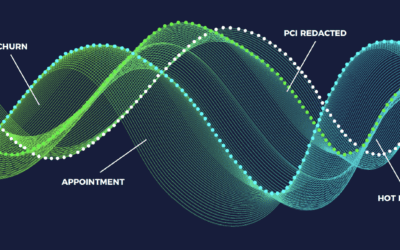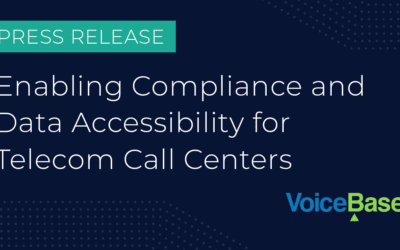Call center agents play a critical role in facilitating the customer relationship. In 2020, the percentage of customers who had contacted a customer service department within the last month remained well over half. Customers rely on contact centers and continue to favor phone calls as a convenient way to have their concerns heard or their requests fulfilled.
Part of effectively helping customers is inputting data and completing tasks during what’s known in the industry as “wrap-up time.” To maximize your call center’s efficiency, you should look for ways to reduce wrap-up time in your call center while maintaining or even improving your commitment to quality customer service. You can accomplish this goal by taking advantage of strategies and tools to make completing after-call work more efficient.
What Is Wrap-Up Time?
Wrap-up time, also called after-call work, post-call processing or follow-up time, is the time contact center agents spend on call-related tasks after ending a call. These actions may involve:
- Documenting the reason for the call in a data system.
- Noting the outcome of the call and the next steps needed.
- Making other notes about the interaction.
- Notifying other departments or individuals of the caller’s concerns or needs.
- Sending resources or written instructions to the caller.
Even if an agent can answer the customer’s questions or fulfill their requests during the call, they’ll still need to dedicate time to data entry afterward to help the company track the reasons for customers’ calls and the results of these interactions. All these tasks must be completed before an agent turns their attention to the next customer so they can effectively focus on each client’s needs separately.
Why Wrap-Up Time Is Important
The wrap-up process is key to both helping the customer solve their problems and helping the company track important data. Without an agent taking detailed notes and follow-up actions after a call, consumers could be left with their issue unresolved or could call back to speak to another agent and have to re-explain themselves. A third of customers agree that explaining the same information to multiple representatives is the number one most frustrating aspect of customer service interactions. Therefore, companies should avoid this scenario as much as possible.
While post-call processing is an essential part of a contact center agent’s job, wrap-up time can become excessive if the processing goes on for too long. It can eat into the time an agent could spend helping other customers.
Companies should strive for a balance, where wrap-up time is kept to a minimum while still giving agents the space they need to accurately input data and handle other post-call tasks. The best way to reduce wrap-up time is not to rush call center agents, leading to possible errors or missing information, but to give them tools to optimize the process.
How Is Wrap-Up Time Measured?
Wrap-up time is one of several metrics call centers use to monitor their efficiency. Wrap-up time is part of what makes up handling time: the total amount of time spent on a customer call transaction, from the moment the interaction begins until the end of post-call processing. Companies generally focus on their average handle time (AHT), which tends to vary from 282 to 528 seconds, depending on the industry.
To determine wrap-up time, you must isolate it from handle time. To do this for an individual call, simply subtract both hold and talk time from handle time. To get a global view of the time your team spends on wrap-up, calculate the average wrap-up time for the whole call center or for certain groups or departments.
To get this average, follow this wrap-up time formula: Start with the total handle time for the group you’re measuring, then subtract the overall hold and talk times to find the total amount of time spent on wrap-up. Then divide this number by the total number of calls to determine the average time spent on wrap-up per call.
Factors That Affect Wrap-Up Time
It can be difficult to pinpoint a certain number of seconds contact center agents should spend on after-call work since the time needed for this task depends on several factors. Some factors that influence the time agents spend on after-call processing include:
- Data entry requirements: Some companies may be able to maintain faster wrap-up times by keeping data entry requirements to a minimum. Other businesses may prioritize having as much data as possible to help them improve processes and enhance the customer experience. Fortunately, as we’ll see below, there are ways you can shorten wrap-up time without sacrificing data.
- Call complexity: Some calls may be routine, and call center agents can quickly enter data and resolve issues during wrap-up time. However, complex calls — which can be more common in some sectors — can necessitate longer wrap-ups. Agents may require more time to contact other departments or take steps to work toward a solution rather than resolve the issue immediately. These calls may also require the agent to write down more notes to explain the customer’s reason for calling or other aspects of the interaction.
- Automated systems: Some contact center software may be better set up for efficient post-call processing. More autofill options, for example, can save agents time. Many call centers also provide automated systems or resources to help customers resolve common issues or answer prevalent questions without speaking to an agent. These systems are helpful to both call centers and customers, but they may mean the calls agents do take tend to be more complex requests, resulting in longer wrap-up times.
- Individual efficiency: Another important variable comes down to agents themselves. A call center agent’s focus level, typing speed and experience with the software can all affect their wrap-up time. Some individuals may prolong wrap-up time longer than necessary because it serves as a break between calls, while others may move on as quickly as they can.
Tips for Reducing Wrap-Up Time
Wrap-up time is an important part of delivering successful customer service, but you can reduce it without sacrificing quality. Here are some top tips for wrap-up that call centers can use to boost efficiency and maintain productivity levels:
1. Complete Some Processing During the Call
One way to reduce the time spent after a call on follow-up tasks is to complete some of these actions during the call. For example, the agent could fill in the “reason for calling” field in their form as soon as the customer voices their question or request. Agents can also enter notes as things come up during the call or even contact someone to move a request forward.
If done correctly, this strategy can help agents follow along with what customers are saying and provide more accurate notes since they won’t have to wait to recall what a customer said. Of course, the other positive is this strategy can reduce wrap-up time. The potential pitfall is that agents could draw out the length of the call or frustrate customers by asking them to wait while they handle tasks. Agents should only do what they can during the call without compromising the quality of their customer service.
2. Encourage Proper Use of Wrap-Up Time
As noted earlier, some agents may be tempted to use wrap-up time as a sort of break. They may want to check their social media account or personal email, for instance, while the clock continues to record wrap-up time. These practices will inflate average wrap-up times. The solution on the agent’s part is simple: Only use wrap-up times for call-related tasks. Managers should encourage employees to use wrap-up time properly and equip them with the tools and training to do so.
One way of doing this is with reminder tools like alerts that appear after a certain amount of time has elapsed. You can base this time on what your organization has found to be an adequate wrap-up duration in most scenarios. A simple notification like this can prompt agents to finish up any necessary tasks and move on to the next call. Another tactic is to provide more accountability by telling agents you will randomly monitor wrap-up time activity periodically.
3. Establish Standard Operating Procedures
An important means of reducing wrap-up times is to eliminate as much time as possible that employees may spend deliberating over what to write down or what to do to process a call. When wrap-up procedures are clearly outlined and all agents know how to follow these procedures, they can get straight to work without spending valuable time figuring out their next steps.
One way of standardizing post-call processing is to coach all agents on proper note-taking. Make sure all workers know what level of detail they should include in their notes. For the type of data all agents should account for, such as the reason for the call and necessary next steps, provide a form they can fill out with specified fields. Each field should also provide a drop-down menu of autofill options for common answers. For example, if you want agents to note the customer’s mood, include several selections to choose from.
4. Improve Typing Speed and Provide Shortcuts
Slow typing may not seem like a major issue, but it can add to wrap-up time and ultimately lower your call center’s efficiency. Data entry professionals are generally expected to type at speeds ranging between 60 and 80 words per minute. You may want to encourage employees to test their typing speed and offer online training to help them improve this speed.
You can also help agents type more quickly by providing shortcuts. A simple option is to have standard abbreviations all agents understand, such as “CUST” for customer or “DOB” instead of date of birth. You may also want to use a text expander application to automatically convert abbreviations to the individual words they stand for. Text expanders capitalize on the speed of using shorthand while making it easier for other agents to read the notes later.
5. Integrate Call Center Software With CRM
Integrating software systems can streamline the whole process of serving customers and reduce wrap-up time. When your customer relationship management (CRM) software is integrated with your call center platform, agents won’t have to enter details like a customer’s account number because that information will already be recorded on the consumer’s profile. Eliminating redundancy across your company operations is an excellent way to improve efficiency without sacrificing anything.
With integrated call center and CRM programs, agents can also benefit from a screen pop feature. This element displays the caller’s information as soon as they call in so an agent better understands who they’re talking to and what is the best way to help them.
6. Continuously Monitor and Optimize Wrap-Up Procedures
As your business evolves, your customer service procedures may also change. The processes you established previously to help agents with wrap-up time may no longer be ideal. Perhaps you need to add drop-down menu options to describe new common reasons for calling. Or, maybe you need to overhaul your whole system.
An effective way to stay on top of any shortcomings in your wrap-up procedures is to request employee feedback. No call center agent should be left to daydream about a feature that could cut their wrap-up time in half and make their job less tedious. Talk to agents to find out what tasks add to their wrap-up time and what insights they have for reducing it. You can then tailor solutions to help your employees work more efficiently.
7. Use Speech Analytics
One of the most impactful changes you can make is using speech analytics software to record and process calls. Speech analytics is a type of artificial intelligence (AI) known as natural language processing (NLP). This software processes raw audio from calls, transcribes the audio into written text and makes determinations about the call based on that data. This technology is impressively accurate and can automatically categorize a conversation, for example, according to what the customer and agent discussed.
The cutting-edge proprietary speech engines from VoiceBase can even record metrics like customer sentiment and tone. This software can save agents time, but the benefits go far beyond that. By transcribing every detail of your customer service calls and making sense of all that data by finding common themes, VoiceBase software can generate charts and easy-to-read graphics so you can gain a more well-rounded understanding of your customer interactions. You can also search through transcripts to retrieve important information as needed.
Process Calls More Efficiently and Effectively With VoiceBase
VoiceBase can help you understand, measure and improve your call center metrics. Our proprietary speech engines can transcribe calls and process this data to provide rich insights into your company’s customer experience. With this technology, you can automate tasks that would otherwise be tedious and time-consuming and provide more detailed data that can help you steer your company to success.
Don’t let lengthy data entry tasks compromise your call center’s efficiency while limiting the amount of data you have to work with. If you want to gain access to actionable information from your customer interactions through state-of-the-art speech analytics, contact VoiceBase today.


